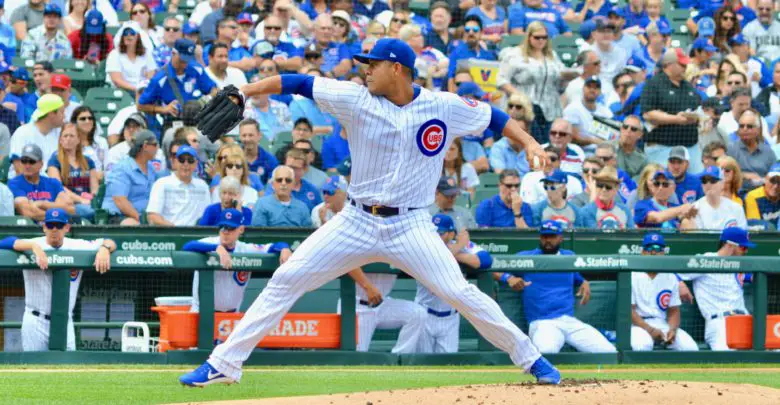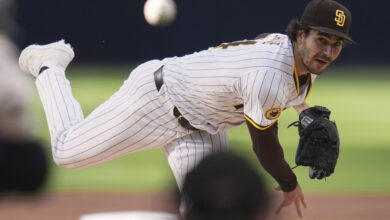
José Quintana Trade May Be Cubs’ Most Realistic Option This Winter
The Cubs’ apparent willingness to make a splash by trading one of their core players has been the subject of many headlines this offseason. But despite all the talk, they have yet to consummate any deals. While the team has been shopping young All-Stars Kris Bryant and Willson Contreras, they do not seem to have seriously looked at their most realistic trade option: José Quintana.
The 30-year-old lefty had a slightly below-average 2019, posting a 4.68 ERA (95 ERA+) over 171 innings, but posted 3.5 fWAR nonetheless. Baseball Reference takes a dimmer view of Quintana’s contributions, listing him with 0.7 bWAR. While he may not have had a stellar year, the Cubs predictably picked up his $10.5 million option for 2020. This is a fairly modest price tag for a veteran starting pitcher who has a career average of over 200 innings per season, particularly in today’s market.
Cot’s Contracts projects the Cubs’ payroll at around $210 million in 2020, about $2 million above the CBT threshold. Based on recent statements from Tom Ricketts and more recent non-moves by the front office, the club will be looking to get the total below $208 million. A Quintana trade would accomplish that while also giving the Cubs plenty of room to acquire one or more of the lower-tier free agents they have not been competing to acquire.
Unlike trying to replace a former MVP at the hot corner, the Cubs have a few internal options to replace Quintana. Tyler Chatwood bounced back in 2019, earning more regular usage with a 3.76 ERA (119 ERA+) over 76.2 innings. Alec Mills posted a 2.75 ERA over 36 innings in nine appearances, four of which were starts, and Colin Rea took home Pitcher of the Year honors in the Pacific Coast League. Then there’s the electric Adbert Alzolay, who could start or serve in more of a swing role.
There’s no denying that trading Quintana would reduce the Cubs’ starting pitching depth, particular when it’s added to the departure of Cole Hamels. But they have several pitchers who can step into the rotation, which means they would likely be in a better relative position following a Quintana trade than they would be after trading Bryant. The most likely replacement at third — barring a subsequent trade for Nolan Arenado — would be David Bote, who has not put up the type of numbers you want from a starting corner man, with a career OPS of .763 in two seasons (99 OPS+).
The Cubs’ asking prices for Bryant and Contreras have reportedly been quite high and it’s entirely possible no team will be able to produce a satisfying package to pry either loose. Trades for pitchers like Quintana, however, are fairly routine. Given the record-breaking deals for pitchers like Gerrit Cole and Stephen Strasburg, a mere $10.5 million for a starter with a history of pitching deep into games should attract plenty of interest.
It’s more fun to chase rumors involving elite players, but a Quintana trade is more realistic and still gets the Cubs under the CBT they seem to be working so hard to avoid. Maybe some desperate team would even be willing to give up a pair of top prospects to jump-start the Cubs’ retooling.

